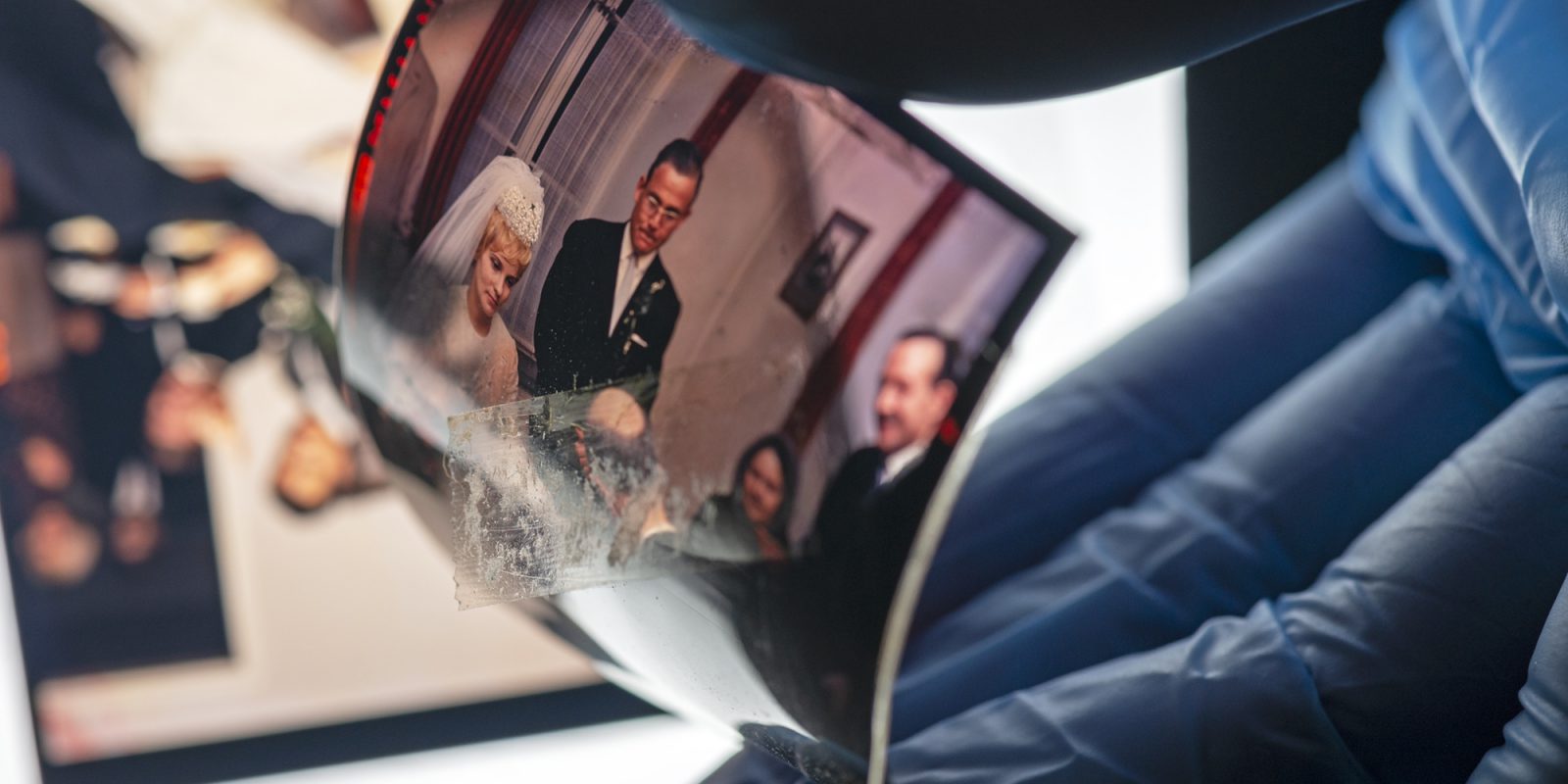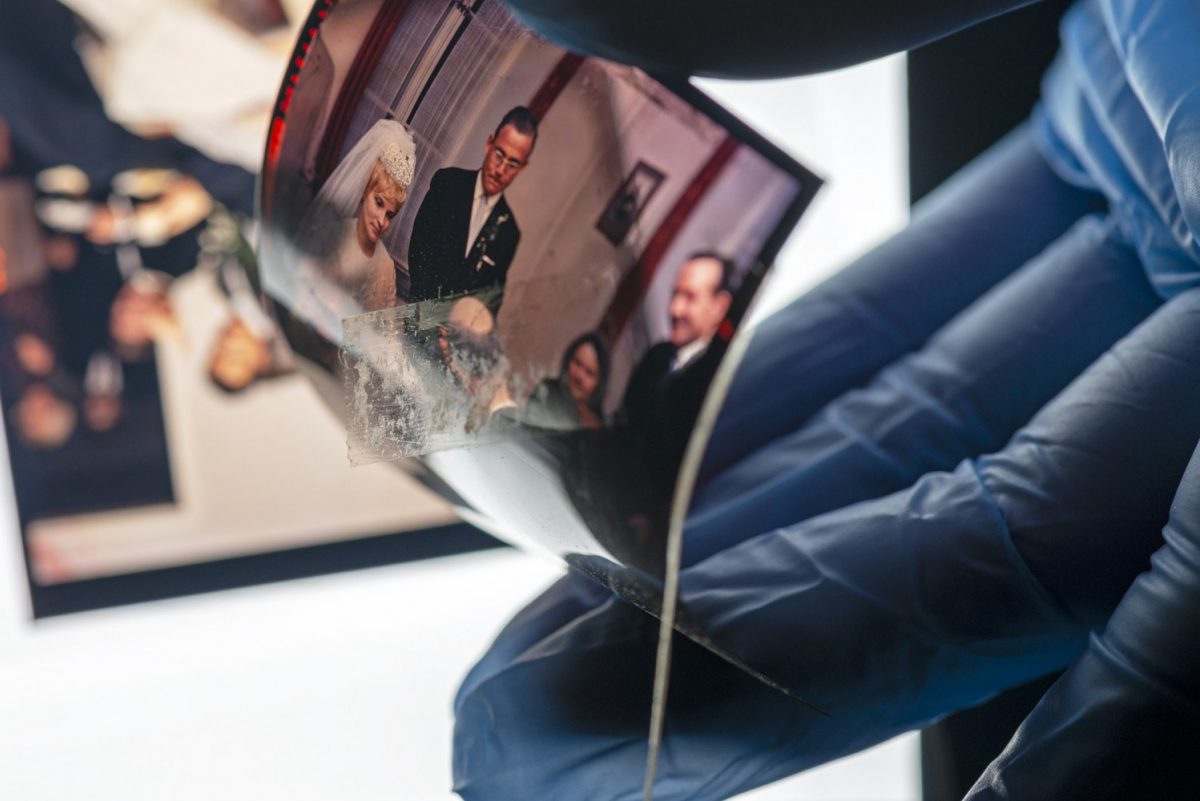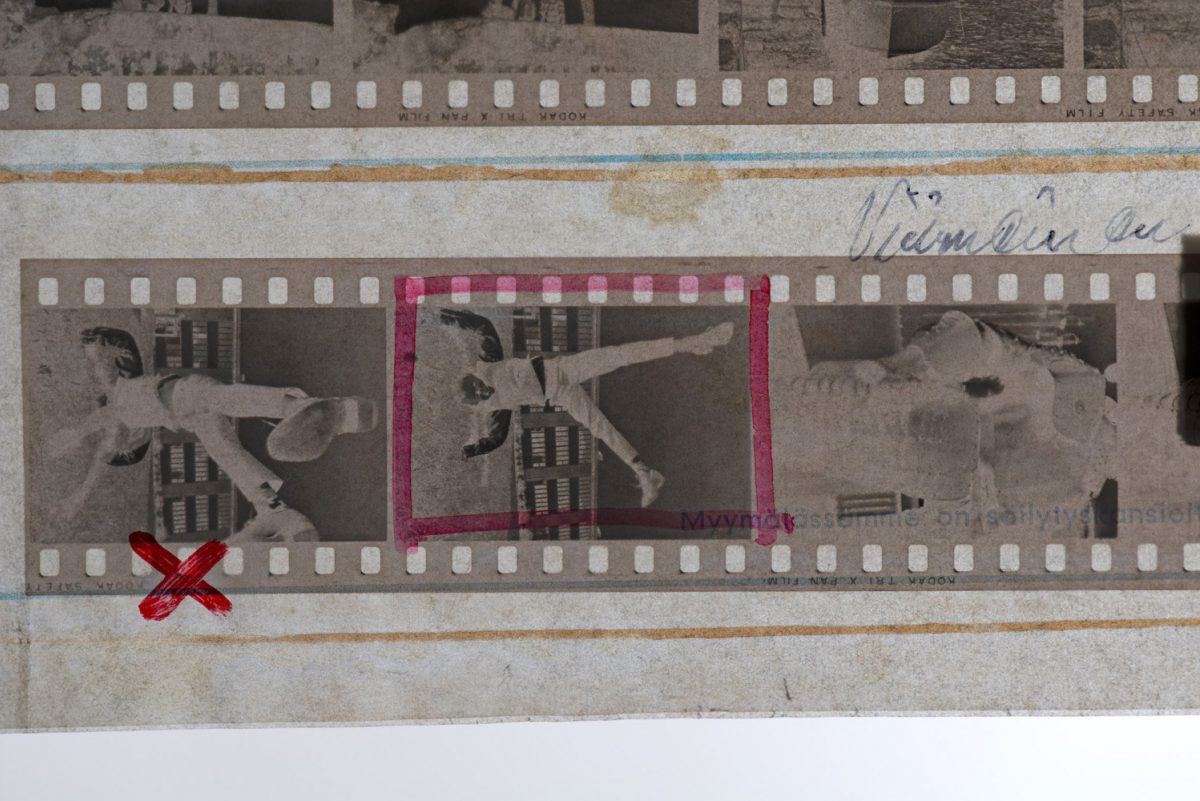
Indestructible, destructible plastic
Challenges in safekeeping film photographs.
Everyone is familiar with the global problems involving plastic. The world’s oceans are drowning in plastic waste. The material may seem eternal, but to museums that are trying to save old film photography collections for future generations the lifecycle of plastic seems rather short.
W. H. F. Talbot invented the negative-positive process in 1841, when the first salt prints were being made by using paper negatives. Paper negatives were made translucent by waxing them, and a later shift to glass plates gave the images the much needed sharpness and detail. In Finland, glass was used at least in studio photography up until the 1950s.
The most significant elements that made photography more accessible included the invention of the gelatine silver process in the 1870s and the introduction of plastic bases from the late 1880s onwards. Since then, the further development of the photography methods and materials has gone hand in hand with the development of plastic. Manufacturers learnt to make thin and pliable plastic at an industrial scale, which lowered the cost of photography. Gradually, photography and the equipment required became simpler and lighter, and the number of pictures and photographers grew considerably.
The developing plastic materials proved to be unstable, even dangerous, which made it necessary to create something new. Cellulose nitrate is flammable, the lifespan of its replacement material, cellulose acetate, is relatively short and polyester is not flexible enough for roll film cameras.
Modern film is made from highly stable acetates, which stops them from turning into vinegar like the older cellulose acetates used to do. However, museums try to gaze hundreds of years into the future and have so far found plastics to be unstable. Moreover, different plastics do not mix well, and when exposed to one another they initiate chemical chain reactions that cannot be stopped once they have reached a certain point.
When it comes to sensitive photography methods, it should be noted that everything affects everything else. A protective cover made from PVC will become sticky over time, and writing made with a marker on the cover will slowly make its way onto the picture itself. Furthermore, it pays to remember how difficult it is to predict how aging will affect these relatively new materials. What seems fine right now will probably not be alright in 50 years’ time.
If you want to preserve your own negatives and prints for future generations, you should utilise better methods than plastic covers and markers – a pen and acid-free paper made from chemically bleached pulp. We in the museum industry are able now to vouch for them.
Text: Erika Tiainen
Kamera 6/2022

Plastic tapes were not made to last. They cause a significant proportion of the damage to museum collections and storage challenges. Photo: Tiina Oasmaa / Press Photo Archive JOKA

The folder has been used to alternate between storing film strips and hastily made contact prints. As a result of the materials’ combined chemical effects, the writing made with a marker is in the process of moving through the protective paper to the film. Photo: Tiina Oasmaa / Press Photo Archive JOKA